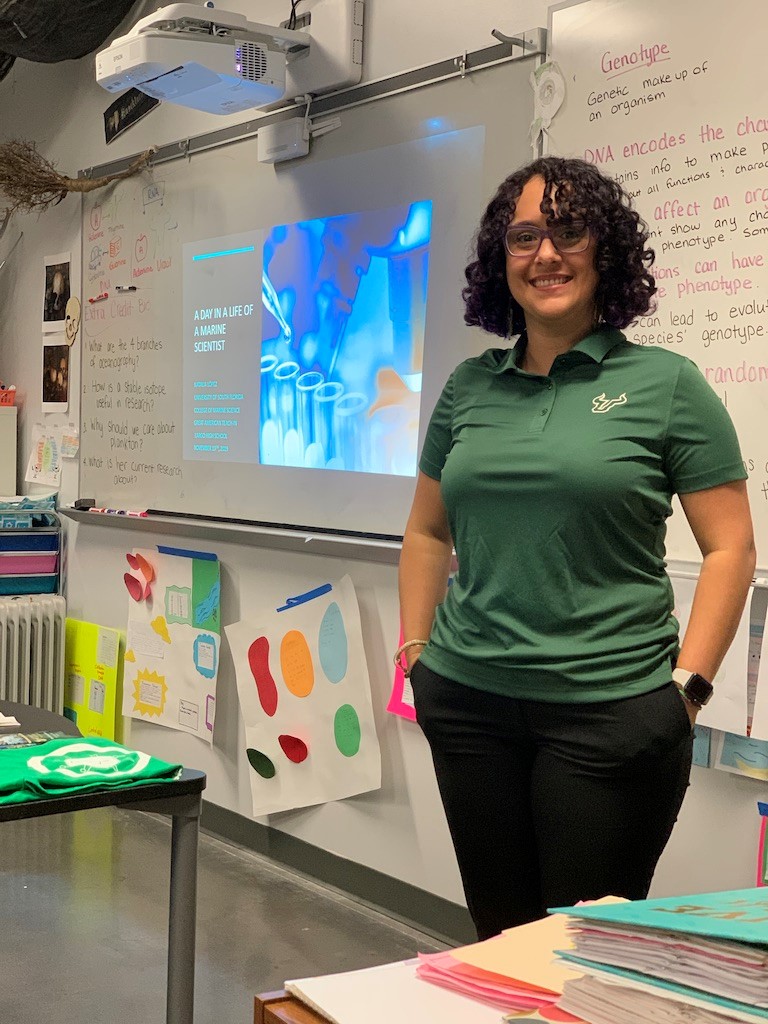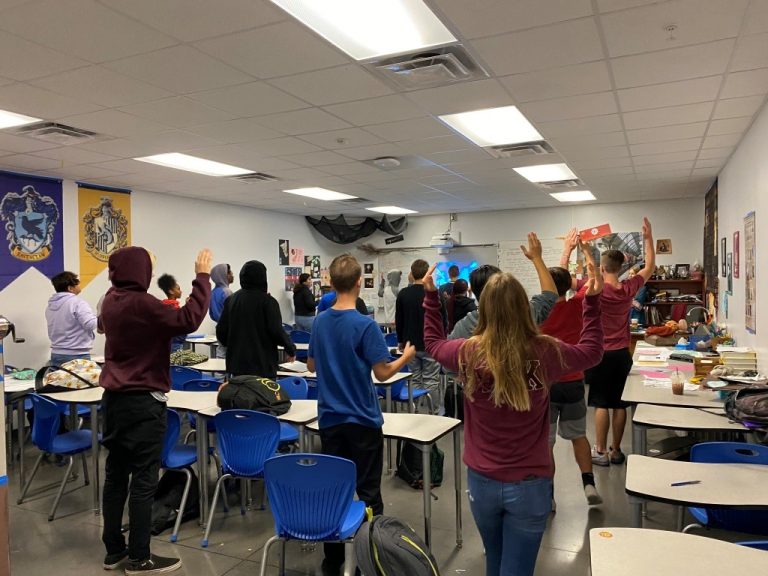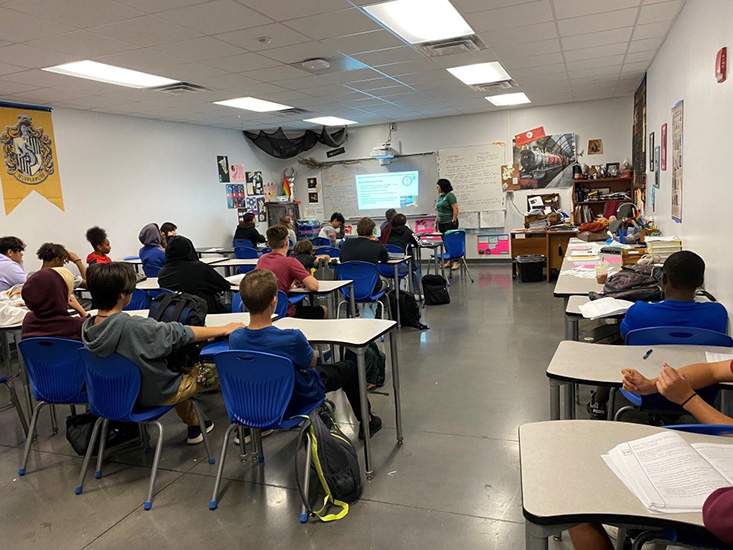Written by: Natalia Lopez, Ph.D. student Biological Oceanography, Breitbart Lab
ST. PETERSBURG, FL – I had never heard of the “Great American Teach In” until I met Ms. Sheila Halley, biology teacher at Largo High, during a Taste of Science event in October. She invited me to speak to her biology students about my career, research and opportunities that the College of Marine Science provides such as the Oceanography Camp for Girls and the Junior Scientist Program. I eagerly completed the form online to participate and was immediately overwhelmed with 30 invitations to speak at multiple schools. I had to decline these invitations but knew it was important to spread the word to the CMS community for years to come. Who knew there such a high demand for marine science speakers?
During the day of the event I was going to talk to only one group, but both the students and teachers asked if I could stay longer to ask more questions, talk to their friends in other grades and get more details about these opportunities. I ended up talking to 6 groups (100+ students) and had the most meaningful conversations with some of the students. I began each talk by introducing myself and then jumped right into a trivia game that I learned at the “Skype A Scientist” presentation we had in October where I listed off names of both real and fake fish and the last person standing would get a prize! Prizes included reusable straws, 2019 Science Festival t-shirts and a “saved from the quiz key” from the science teacher. This activity got the students engaged to ask questions about these fishes and motivated them to look forward to the presentation.

Natalia Lopez and her presentation titled: “A day in a life of a Marine Scientist”
After my talk, the top 3 questions were: what sacrifices I had to make to pursue this
career, how long have I been doing this for and what are some of the coolest experiences
I have had. Scientific related questions included why corals spawn at night do, what
is ocean acidification and if the megalodon was real. When the activity was over,
the teachers expressed their gratitude and said they wanted to participate at the
Junior Scientists next year as well as invited me to speak again next year. This was
certainly an experience to remember and I can’t wait to do it again next year. I encourage
my colleagues to do it at least once in their career because these students are potential
oceanographers waiting to be awakened!

Students in the biology class playing the fish trivia game.
